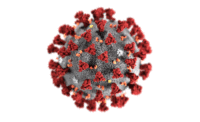OSHA has issued Frequently Asked Questions that explain the differences between cloth face coverings, surgical masks and respirators.
The resource is extensive, but some highlights include:
- Cloth face coverings do not constitute personal protective equipment.
- Surgical masks are not considered to be PPE if they are being used solely to contain the respiratory droplets of the person wearing them (referred to by OSHA as “source control”).
- Although employers are not required to provide their employees with cloth face coverings or surgical masks, the use of such face coverings and/or surgical masks would constitute part of “a control plan designed to address hazards from SARS-CoV-2” under the General Duty Clause.
- OSHA suggests following CDC guidance on washing face coverings.
OSHA explains, “Employers may choose to use cloth face coverings as a means of source control . . . [where] transmission risk cannot be controlled through engineering or administrative controls, including social distancing.”
OSHA also reiterates guidance from the Centers for Disease Control and Prevention that cloth face coverings are not a substitute for social distancing.
OSHA also emphasizes that surgical masks and cloth face coverings, including in the construction industry, are not acceptable substitutes where respirators are required due to exposures to contaminants such as asbestos or silica.
"In general, employers should always rely on a hierarchy of controls that first includes efforts to eliminate or substitute out workplace hazards and then uses engineering controls (e.g., ventilation, wet methods), administrative controls (e.g., written procedures, modification of task duration), and safe work practices to prevent worker exposures to respiratory hazards, before relying on personal protective equipment, such as respirators. When respirators are needed, OSHA’s guidance describes enforcement discretion around use of respirators, including in situations in which it may be necessary to extend the use of or reuse certain respirators, use respirators beyond their manufacturer's recommended shelf life, and/or use respirators certified under the standards of other countries or jurisdictions.
The Centers for Disease Control and Prevention and OSHA have described crisis strategies intended for use in healthcare in which surgical masks or cloth face coverings may offer more protection than no mask at all when respirators are needed but are not available. Such information is not intended to suggest that surgical masks or cloth face coverings provide adequate protection against exposure to airborne contaminants for which respirators would ordinarily be needed. Although OSHA's enforcement guidance describes equipment prioritization that includes surgical masks, employers must still comply with the provisions of any standards that apply to the types of exposures their workers may face. For example, the permissible exposure limits of all substance-specific standards, such as asbestos and silica, remain in place, and surgical masks are not an acceptable means of protection when respirators would otherwise be required (e.g., when engineering, administrative, and work practice controls do not sufficiently control exposures).
If respirators are needed but not available (including as described in the OSHA enforcement guidance noted above), and hazards cannot otherwise be adequately controlled through other elements of the hierarchy of controls (i.e., elimination, substitution, engineering controls, administrative controls, and/or safe work practices), avoid worker exposure to the hazard. Whenever a hazard presents an imminent danger, and in additional situations whenever feasible, the task should be delayed until feasible control measures are available to prevent exposures or reduce them to acceptable levels (i.e., at or below applicable OSHA permissible exposure limits)."
According to this latest OSHA guidance, if respirators are not available where a Permissible Exposure Limit is exceeded, worker exposure should be avoided by delaying the task until feasible control measures are available to reduce the exposures below the Permissible Exposure Limit.






